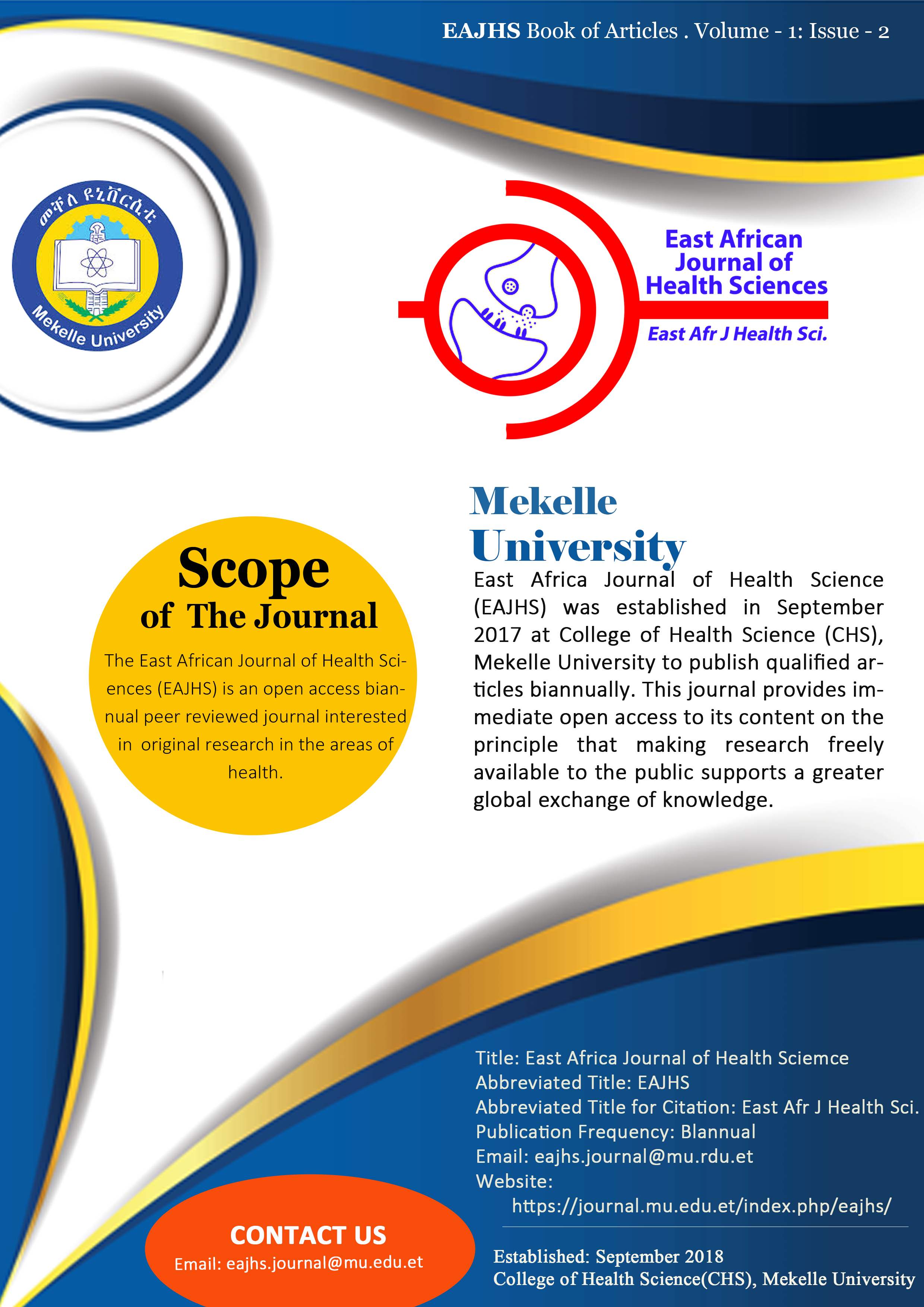Patterns and factors associated with cardiovascular disorders at Ayder Comprehensive Specialized Hospital, Tigray, northern Ethiopia
DOI:
https://doi.org/10.71624/fj3h2r15Keywords:
Cardiovascular disorders, valvular heart disease, Ayder Comprehensive Specialized HospitalAbstract
Background: Cardiovascular diseases are major public health concern worldwide. The pattern of cardiovascular disorders is different across the globe; Ischemic heart disease being the commonest in developed world, rheumatic and congenital heart disease predominates in the developing countries.
Objective: Examine the pattern of cardiovascular disorders and identify associated factors in Ayder Comprehensive Specialized Hospital, Tigrai, and Northern Ethiopia.
Method: A cross sectional evaluation of data from patients with cardiovascular disorders in Ayder Comprehensive Specialized Hospital, Northern Ethiopia was made from January 01, 2015 to June 30, 2015. Structured data collection checklist was used to collect the data. The International Classification of Diseases and Related Health Problems (ICD-10) was used to classify the cardiovascular diseases. Descriptive statistics like percentage, mean, standard deviation and Chi-square test of association was used to examine the pattern of cardiovascular disorders. Inferential statistics, logistic regression, was applied to identify associated factors of cardiovascular diseases. Data was analyzed using SPSS (statistical Package for Social Sciences) software version 20.
Results: A total of 1000 participants were included in the study. The age ranged from 22 days to 87 years. The mean (SD) age of the study participants was 32.3±23.8 years. About 375 (37.5%) participants were less than 18 years of age. More than half 522(52.7%) were females and close to half (49%) of the study participants had valvular heart disease. Rheumatic valvular heart disease accounted for 41.1% of participants whereas, non-rheumatic valvular heart disease accounted for 8%. Hypertension was seen in 15.1% of the participants and It was present in 42% of patients with ischemic heart disease. Rheumatic heart disease was common in females and patients who came from rural areas. For the rheumatic valvular heart disease (RVHD), age was found to be a statistically negatively associated with the odds of developing the disease (AOR=0.97, 95% C.I: 0.97-0.98). This implies, as age increases the likelihood or odds of developing rheumatic valvular heart disease (RVHD) decreases. Being female decreases the odds of developing rheumatic valvular heart disease. Being a rural resident decreases the odds of developing the rheumatic valvular heart disease as compared to the reference category urban (AOR=.709, 95% C.I: 0.54-0.93). Family size and diabetes were not found statistically significant.
Conclusion: Rheumatic heart disease and congenital heart disease are the leading causes of cardiac disease inthe setting. Emphasizing the need of early detection and treatment of throat infections, and strengthening cardiac surgery services and catheter based treatments in the region are recommended. Residence place, age and gender were found to be statistically significantly associated with the risk of developing the rheumatic valvular heart disease."
Downloads
Published
Issue
Section
Categories
License
Copyright (c) 2024 The Author(s)

This work is licensed under a Creative Commons Attribution 4.0 International License.
This journal and its articles are licensed under the Creative Commons Attribution 4.0 International License (CC BY 4.0).


